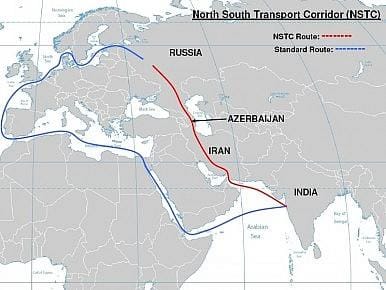Rasht-Astara Railway Link
In a significant development, Russia and Iran have recently signed a Memorandum of Understanding (MoU) to construct a rail link that will bolster the International North-South Transport Corridor (INSTC) and facilitate the expansion of trade between India and Russia. This rail link holds immense potential in enhancing connectivity and promoting economic cooperation.
Connecting Russia and Iran
The presidents of Iran and Russia have put their signatures on the agreement to finalize the construction of the rail link. The route will span from Rasht, an Iranian city on the Caspian Sea, to Astara in Azerbaijan. This rail connection is expected to serve as a crucial component of the INSTC, which is aimed at streamlining trade between India and Russia.
Enhancing Global Traffic Flows
The rail link holds great significance in diversifying global traffic flows. It will establish a seamless connection between Russian ports situated along the Baltic Sea and Iranian ports located in the Indian Ocean and the Gulf, enabling smooth trade and transportation between these regions. By establishing this vital transportation route, the rail link will enable the movement of goods and facilitate efficient trade between these regions.
The North-South Corridor
The North-South corridor will serve as a manifestation of friendship, convergence, and commercial cooperation. It will foster strong ties and facilitate trade not only between East Asia and the Caucasus region but also extend to Northern Europe. This ambitious initiative is poised to unleash immense potential for economic growth and collaboration among these regions.
Role of INSTC
The INSTC, a multi-mode transit system, plays a pivotal role in connecting ship, rail, and road routes across India, Iran, Azerbaijan, Russia, Central Asia, and Europe. By strengthening the INSTC, this rail link will further facilitate the movement of cargo and bolster trade ties between India and Russia. It opens up new opportunities for economic collaboration and supports the growth of bilateral trade.
Expected Completion and Funding
The rail line is projected to be completed by mid-late 2024. Russia has taken up the responsibility of funding the construction, which will be repaid through Iranian transit fees once the route becomes operational. This financing arrangement reflects the commitment of both nations to enhancing connectivity and promoting mutually beneficial trade.
Month: Current Affairs - May, 2023
Category: International / World Current Affairs


